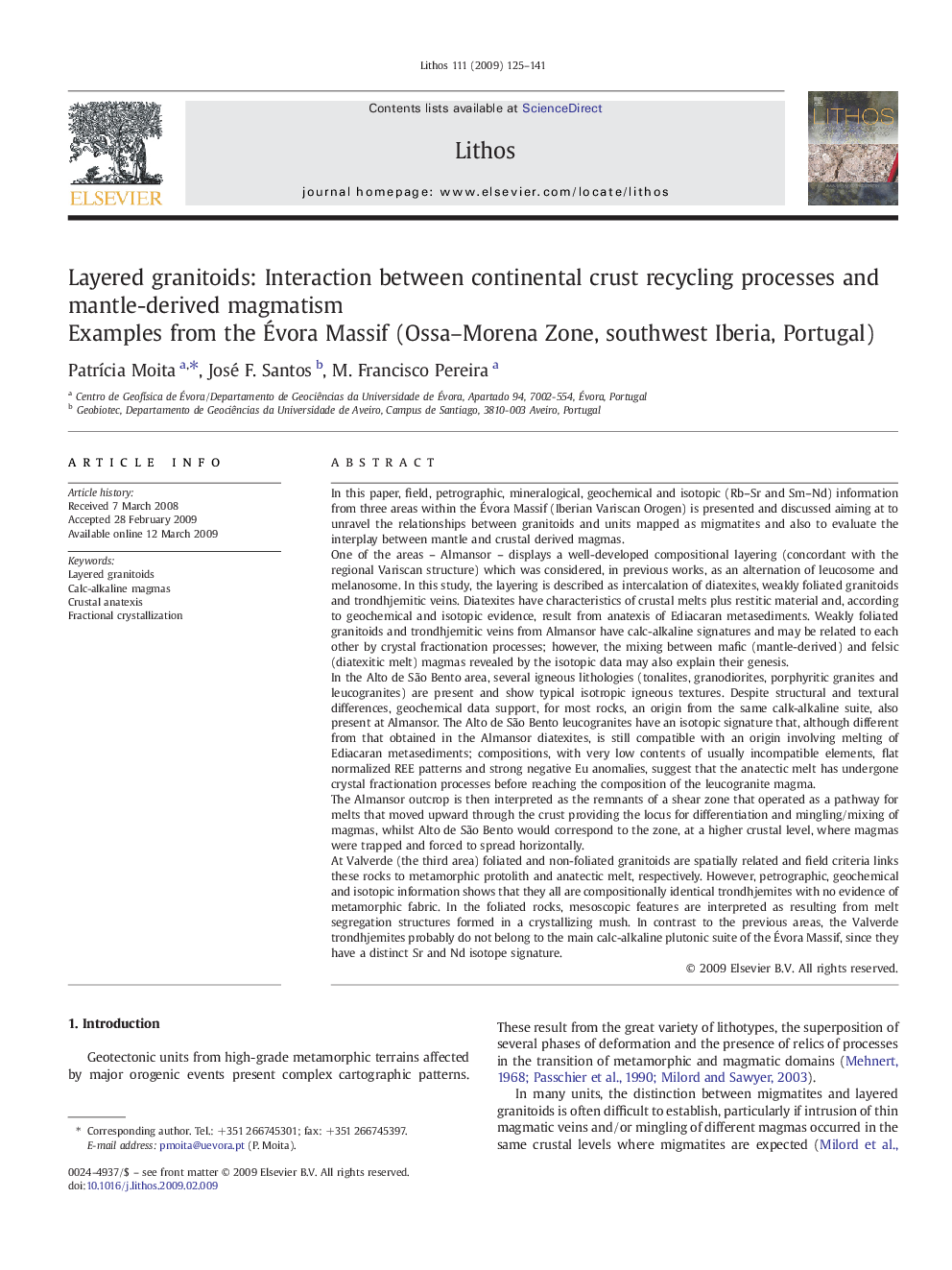| کد مقاله | کد نشریه | سال انتشار | مقاله انگلیسی | نسخه تمام متن |
|---|---|---|---|---|
| 4717353 | 1638742 | 2009 | 17 صفحه PDF | دانلود رایگان |

In this paper, field, petrographic, mineralogical, geochemical and isotopic (Rb–Sr and Sm–Nd) information from three areas within the Évora Massif (Iberian Variscan Orogen) is presented and discussed aiming at to unravel the relationships between granitoids and units mapped as migmatites and also to evaluate the interplay between mantle and crustal derived magmas.One of the areas – Almansor – displays a well-developed compositional layering (concordant with the regional Variscan structure) which was considered, in previous works, as an alternation of leucosome and melanosome. In this study, the layering is described as intercalation of diatexites, weakly foliated granitoids and trondhjemitic veins. Diatexites have characteristics of crustal melts plus restitic material and, according to geochemical and isotopic evidence, result from anatexis of Ediacaran metasediments. Weakly foliated granitoids and trondhjemitic veins from Almansor have calc-alkaline signatures and may be related to each other by crystal fractionation processes; however, the mixing between mafic (mantle-derived) and felsic (diatexitic melt) magmas revealed by the isotopic data may also explain their genesis.In the Alto de São Bento area, several igneous lithologies (tonalites, granodiorites, porphyritic granites and leucogranites) are present and show typical isotropic igneous textures. Despite structural and textural differences, geochemical data support, for most rocks, an origin from the same calk-alkaline suite, also present at Almansor. The Alto de São Bento leucogranites have an isotopic signature that, although different from that obtained in the Almansor diatexites, is still compatible with an origin involving melting of Ediacaran metasediments; compositions, with very low contents of usually incompatible elements, flat normalized REE patterns and strong negative Eu anomalies, suggest that the anatectic melt has undergone crystal fractionation processes before reaching the composition of the leucogranite magma.The Almansor outcrop is then interpreted as the remnants of a shear zone that operated as a pathway for melts that moved upward through the crust providing the locus for differentiation and mingling/mixing of magmas, whilst Alto de São Bento would correspond to the zone, at a higher crustal level, where magmas were trapped and forced to spread horizontally.At Valverde (the third area) foliated and non-foliated granitoids are spatially related and field criteria links these rocks to metamorphic protolith and anatectic melt, respectively. However, petrographic, geochemical and isotopic information shows that they all are compositionally identical trondhjemites with no evidence of metamorphic fabric. In the foliated rocks, mesoscopic features are interpreted as resulting from melt segregation structures formed in a crystallizing mush. In contrast to the previous areas, the Valverde trondhjemites probably do not belong to the main calc-alkaline plutonic suite of the Évora Massif, since they have a distinct Sr and Nd isotope signature.
Journal: Lithos - Volume 111, Issues 3–4, August 2009, Pages 125–141